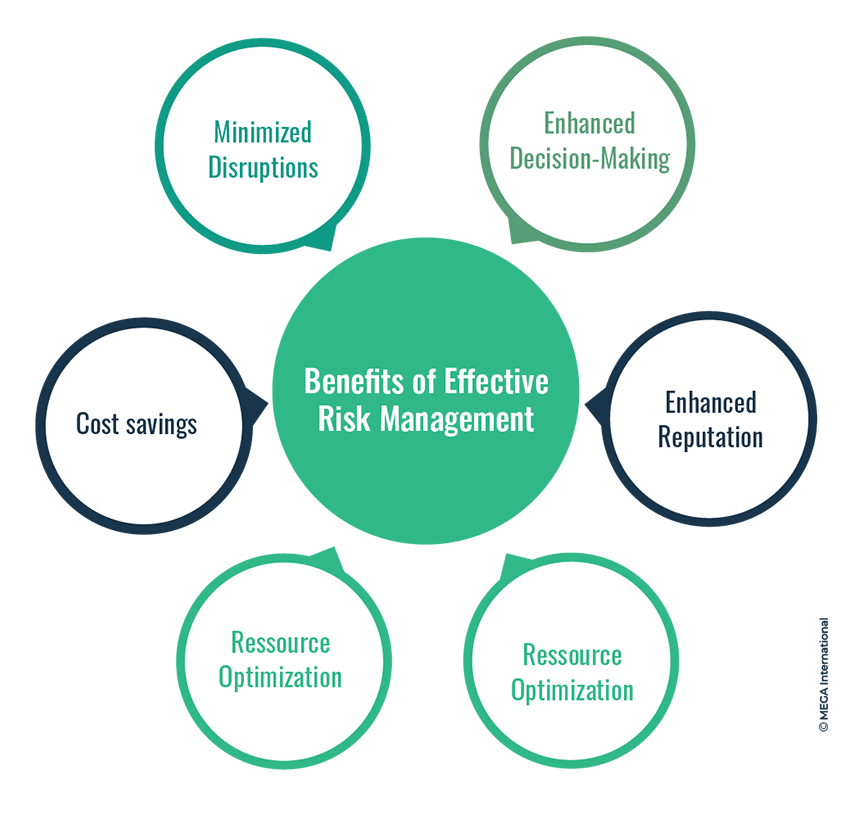A Detailed Guide to Understanding the Importance of Risk Management
A Detailed Guide to Understanding the Importance of Risk Management
Blog Article
Why the Relevance of Risk Management Can not Be Forgotten in Today's Economic climate
In today's swiftly progressing economic landscape, the duty of Risk Management has actually ended up being crucial. This elevates a critical concern: can the value of Risk Management in ensuring security and sustainability be overlooked?
Comprehending the Principle of Risk Management
The Duty of Risk Management in Today's Economy
Having actually realized the principle of Risk Management, we can now explore its function in today's economic climate. Risk Management acts as an essential device for governments and organizations, permitting them to navigate economic and operational unpredictabilities. Effective Risk Management can assist companies anticipate prospective hazards, enabling them to make educated choices and act proactively instead of reactively. Furthermore, it aids in the allowance of resources, guaranteeing that potential losses are lessened while chances for growth are taken full advantage of. In the context of an unpredictable economic landscape marked by fast global events and technological changes, Risk Management ends up being a vital critical part, adding to the security, sustainability, and total durability of economic climates on both a macro and micro range.
The Effect of Neglecting Risk Management
Neglecting Risk Management can lead to dire repercussions for any kind of service or economy. The global financial dilemma of 2008 offers as a stark pointer of the catastrophic influence that forgeting Risk Management can have on the economic climate at big. Hence, neglecting Risk Management not just endangers specific businesses but can destabilize the entire economy, highlighting the essential function played by reliable Risk Management in today's financial landscape.
Trick Components of Efficient Risk Management Strategies
Efficient Risk Management methods revolve around two vital elements: recognizing prospective threats and carrying out reduction actions. To make certain the stability and sustainability of an organization, these elements need to not be ignored. In the adhering to conversation, these critical aspects will be explored in detail.
Identifying Potential Threats
Why is recognizing possible dangers critical in any kind of Risk Management technique? Identification of potential threats is the keystone of any kind of reliable Risk Management method. It entails the organized evaluation of the service landscape, both inner and external, to uncover hazards that might hinder a company's strategic objectives. Identifying pop over here potential threats enables companies to anticipate issues, rather than just react to them. This proactive technique encourages organizations to take care of unpredictability with self-confidence, by highlighting locations that call for more interest and planning. It additionally enables them to focus on resources effectively, concentrating on threats that can have one of the most substantial influence on their operations. In general, the procedure of identifying possible risks is an essential action in fostering company resilience and promoting sustainable growth.
Carrying Out Mitigation Actions
Browsing through the volatile organization waters, browse around this web-site companies start the important journey of applying mitigation measures as part of their Risk Management techniques. These actions, created to lower the impact of potential dangers, develop the backbone of a robust Risk Management plan. They encompass numerous techniques, consisting of moving the Risk to one more celebration, preventing the Risk, lowering the adverse result or possibility of the Risk, or perhaps accepting some or all the effects of a specific Risk. The option of method relies on the company's certain context, Risk tolerance, and ability to bear losses. Successful reduction needs mindful planning, regular revision, and consistent alertness. In a rough economic climate, these steps boost durability, guaranteeing lasting survival and growth.

Case Studies: Effective Risk Management in Practice
Regardless of the complexities included, there are several instances of reliable Risk Management in method that show its crucial function in organization success. The car manufacturer swiftly established a risk Management team that decreased production downtime by identifying alternative distributors. These circumstances underscore that effective Risk Management can not only secure organizations from prospective dangers but likewise enable them to confiscate chances.
Future Patterns in Risk Management: Adapting to a Dynamic Economy
Looking ahead, the landscape of Risk Management is poised for significant changes as it adapts to a vibrant economic situation. Technical advancements are anticipated to transform the field, with automation and fabricated intelligence playing a vital role in Risk recognition and mitigation. At the exact same time, the raising complexity of worldwide markets and the changability of geopolitical occasions are making Risk Management extra difficult.
Verdict
In conclusion, Risk Management plays an important role in today's interconnected and unpredictable economy. As the economy continues to look at this now develop, so need to run the risk of Management techniques, underscoring its ongoing significance in an ever-changing organization landscape.
A proper Risk Management technique is not about eliminating threats totally - a feat virtually difficult in the unstable globe of service. Hence, disregarding Risk Management not just intimidates specific businesses but can destabilize the entire economic climate, underscoring the pivotal duty played by reliable Risk Management in today's financial landscape.
Efficient Risk Management approaches revolve around two essential elements: implementing and identifying potential risks mitigation actions.Why is identifying potential dangers vital in any Risk Management technique? They incorporate different techniques, including transferring the Risk to one more party, preventing the Risk, reducing the unfavorable result or likelihood of the Risk, or even accepting some or all the consequences of a particular Risk.
Report this page